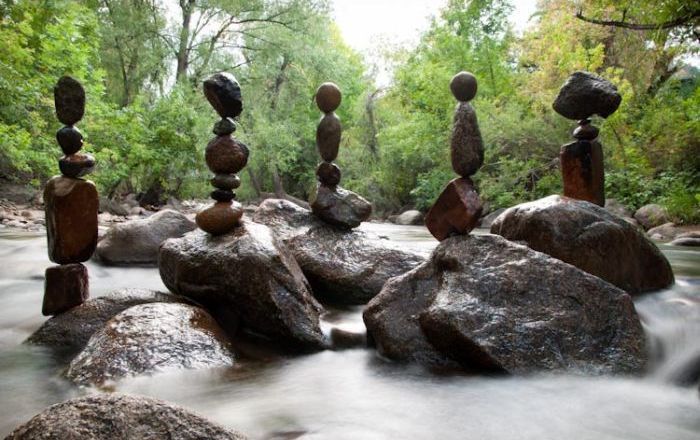|
|
Gravity Glue Project By Michael Grab
|
How to...
The most fundamental element of balancing in a physical sense is finding some kind of “tripod” for the rock to stand on. Every rock is covered in a variety of tiny to large indentations that can act as a tripod for the rock to stand upright, or in most orientations you can think of with other rocks. By paying close attention to the feeling of the rocks, you will start to feel even the smallest clicks as the notches of the rocks in contact are moving over one another. In the finer point balances, these clicks can be felt on a scale smaller than millimeters. Some point balances will give the illusion of weightlessness as the rocks look to be barely touching. Parallel to the physical element of finding tripods, the most fundamental non-physical element is harder to explain through words. In a nutshell, i am referring to meditation, or finding a zero point or silence within yourself. Some balances can apply significant pressure on your mind and your patience. The challenge is overcoming any doubt that may arise.
Achieving a challenging balance requires contemplation of both mental and physical elements simultaneously. You must “get to know” the rocks you are working with. Some rock characters will coordinate better with other characters of rocks and vice versa back and forth right, left, up, or down. The trick I’ve found is to play and experiment. If you keep at it, a balance will be inevitable if you make yourself present in that moment of balance. The closer you get to achieving balance, the more weightless the rock seems to feel, since the majority of the work is applied upward on the rock you are trying to balance. Another tip I would suggest is try balancing larger rocks. using larger rocks only magnifies the feeling of the “clicks”. Also, more weight will usually have more stability in wind or other erosive forces.
|
|









